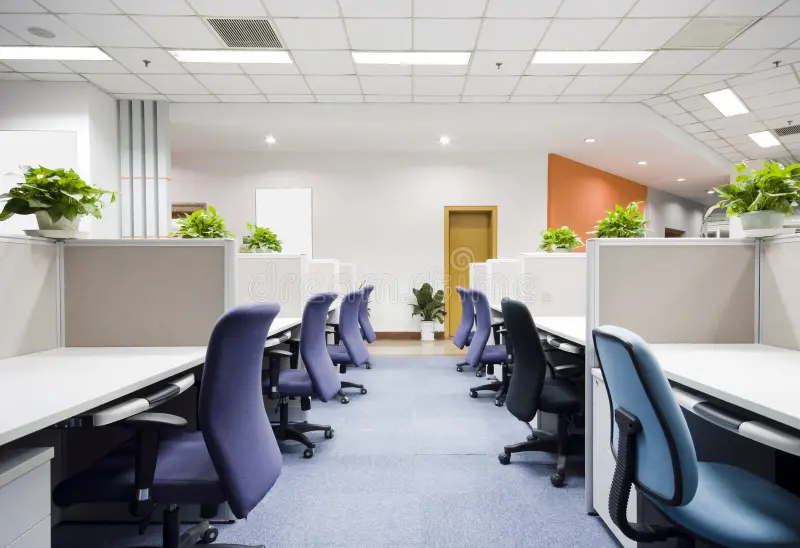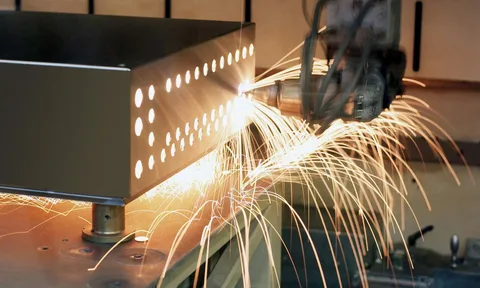Introduction: Why Design Matters in the Corporate World
In today’s competitive business landscape, first impressions go beyond branding and marketing. The physical workspace itself speaks volumes about a company’s values, culture, and professionalism. That’s why corporate office interior design plays a pivotal role in shaping both employee productivity and client perception. A thoughtfully designed workspace promotes collaboration, innovation, and well-being while reinforcing corporate identity.
Whether you’re setting up a new office or renovating an old one, creating a functional, aesthetic environment is an investment that pays long-term dividends in morale, performance, and even client retention.
Benefits of Good Corporate Office Design
Boosts Productivity and Focus
Open layouts, sound-absorbing panels, ergonomic seating, and appropriate lighting reduce distractions and fatigue, enabling teams to perform at their best.
Enhances Brand Image
The workplace reflects your brand. Sleek, modern interiors communicate innovation, while warm, natural designs signal trust and transparency. Your corporate office interior design should subtly align with your industry and company ethos.
Supports Employee Wellness
Features like natural lighting, indoor greenery, flexible furniture, and quiet zones contribute to physical comfort and mental health. A comfortable office reduces absenteeism and promotes job satisfaction.
Encourages Collaboration
Dedicated breakout spaces, glass partitions, and flexible meeting zones can encourage spontaneous interactions and effective teamwork.
Key Elements of Corporate Office Interior Design
1. Space Planning and Flow
Strategic layout planning ensures smooth movement across departments. Efficient zoning includes dedicated areas for workstations, meetings, quiet zones, receptions, and social spaces.
2. Lighting Design
Natural lighting should be prioritized wherever possible. Pair it with LED task lights and ambient fixtures to ensure each area has suitable illumination. Poor lighting affects mood, eye strain, and overall productivity.
3. Color Psychology
Color influences mindset. Cool tones like blue and green foster calm and concentration, while energetic hues like yellow and orange stimulate creativity. Neutral palettes, accented with branded tones, create a professional yet vibrant space.
4. Furniture and Ergonomics
Ergonomic chairs, adjustable desks, and collaborative workstations are essential. Comfort and flexibility are key when selecting office furniture to support a hybrid work environment.
5. Technology Integration
Modern offices need tech-ready designs. This includes cable management systems, digital conferencing tools, smart lighting, and energy-efficient appliances integrated seamlessly into the environment.
6. Sustainability Features
Incorporating eco-friendly materials, recycled furnishings, and energy-efficient solutions not only helps the planet but also projects a socially responsible image.
Design Themes for Corporate Offices
Modern Minimalist
Clean lines, uncluttered desks, and a monochromatic palette define this style. Perfect for tech companies and startups focused on productivity and sleek aesthetics.
Industrial Urban
Exposed brick, ductwork, concrete floors, and metal fixtures offer a raw, creative vibe often adopted by design firms and marketing agencies.
Biophilic Design
Natural materials, indoor plants, water features, and abundant daylight promote wellness and reduce stress. This style suits companies prioritizing work-life balance and eco-consciousness.
Collaborative & Agile Workspaces
Furniture on wheels, movable walls, and reconfigurable zones support teams with dynamic workflows and hybrid schedules.
Practical Tips to Upgrade Your Office Design
- Use Acoustic Panels: In open-plan offices, acoustic design helps control noise and increase focus.
- Add Personalization Corners: Allow teams to decorate small areas to reflect their creativity and create ownership.
- Design Multi-functional Rooms: Rooms that serve as both meeting spaces and break areas make better use of floor plans.
- Maximize Vertical Space: Use tall bookshelves, plant walls, and creative artwork to make the space more visually interesting.
- Incorporate Company Culture: Highlight milestones, values, or team achievements through creative wall designs or digital displays.
Common Mistakes in Office Design
- Over-cluttered Spaces: Too much décor or furniture can make the office feel chaotic.
- Ignoring Employee Input: Employees are the primary users—consider their feedback when designing or renovating.
- Poor Lighting Choices: Fluorescent lighting or lack of natural light can create an uninspiring work environment.
- Uncomfortable Furniture: Non-ergonomic chairs and desks can lead to physical issues and reduce productivity.
- Lack of Privacy Areas: Even in collaborative environments, employees need quiet zones for focused tasks or private discussions.
The Future of Corporate Office Interior Design
Post-pandemic, design trends are shifting toward flexible, wellness-focused workspaces. Companies are investing in hybrid workstations, virtual collaboration zones, contactless technology, and air quality enhancements.
There’s also an increasing emphasis on designing spaces that support inclusivity and accessibility—ensuring that all employees, regardless of physical ability, feel welcome and productive.
Workspaces of the future will be adaptable, data-driven, and experience-centric. Smart office systems will optimize temperature, lighting, and room scheduling based on usage patterns.
FAQs
What is corporate office interior design?
Corporate office interior design refers to planning and styling work environments to reflect brand identity, boost efficiency, and improve employee well-being.
How does office design impact productivity?
Proper lighting, ergonomic furniture, efficient layouts, and sound design reduce distractions, enhance comfort, and enable better focus.
What should be included in a modern office layout?
A modern layout includes flexible desks, quiet rooms, collaborative zones, lounges, and tech-integrated conference rooms—all arranged to support daily workflows.
How often should an office design be updated?
Every 5 to 10 years, depending on business growth, brand evolution, or changes in team dynamics. Smaller updates like furniture or lighting can be done more frequently.
Can interior design influence company culture?
Yes. Office design can reinforce values like transparency, collaboration, or innovation. For example, open-plan offices may support teamwork, while quiet zones support deep focus.
Conclusion
Your office environment is a reflection of your company’s purpose, people, and priorities. Investing in smart, functional corporate office interior design fosters not just a better workplace but also stronger company culture, enhanced productivity, and a lasting impression on clients and employees alike.
From thoughtful layouts to sustainable features and personalized aesthetics, the design of your corporate space should align with your vision for the future. Great design doesn’t just fill space—it elevates it.



